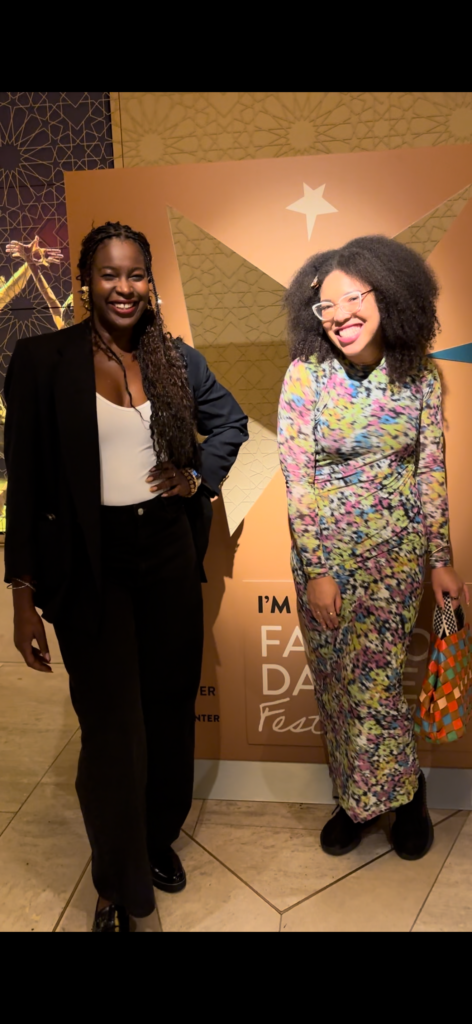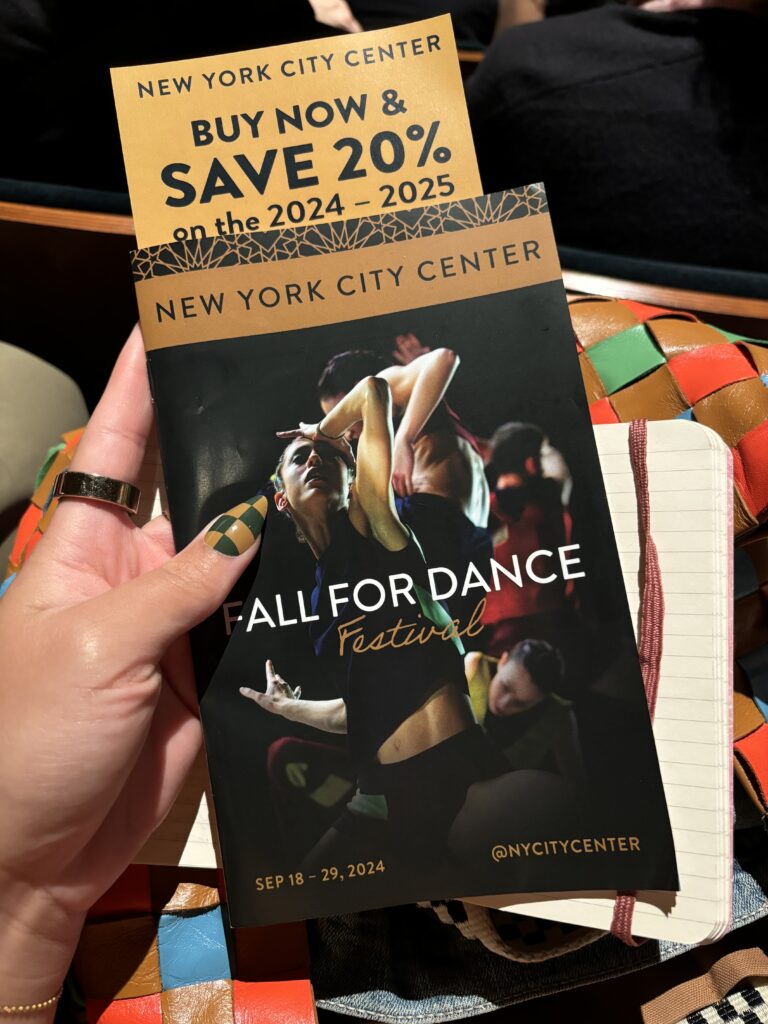Selected Reviews from Fall for Dance 2024
Complexions Contemporary Ballet
The ballerina in the jewelry box my father brought back from overseas looked like me, enough. With her brown hair and beige skin, she looked like me in the same way Dora the Explorer might. She was lithe, and because I was dedicated to winding up the crank on the underside of the box, she was ever spinning when I went in for a pair of earrings to adorn my ‘Sunday Best.’ I’d taken one ballet class but quit for tap, hoping to find a little more ‘rhythm’ (which I’ve heard is a relatable transition.) I thought ballet, like the twirling ballerina, was close but not a perfect fit. I’ve never had any regrets about this until I was seated in the balcony at City Center looking down, mesmerized, by Complexions Contemporary Ballet at City Center’s Fall for Dance festival.
A Black ballerina. With an ear length afro. In childhood, I felt “like a boy” when my hair didn’t swish in the wind or touch my shoulders. She and her afro moved as one and my inner child poked at me. Her thighs, like mine, looked equally likely to dominate in a hundred-meter dash. Can I take it too far? She sweat (which I’ve never seen at the Nutcracker!) and it was the only evidence of any difficulty in a penché, grand jeté or otherwise impressive execution. Dwight Rhoden, the company’s co-artistic director (along with Desmond Richardson) and an Ailey alum, choreographed “Excerpts from For Crying Out Loud” which is set to music by U2. Congratulations are in order simply for positioning April Watson in plain view.
Moments of Rhoden’s choreography stayed with me days later. Dancers marching in from the wings en pointe, like God’s most graceful army. Cycling pas de deux (my favorite duo: Ms. Watson and Joe Gonzalez.) At times, the music and accompanying movement were quite literal and bordered on interpretive dance – U2 sings of walking while the male dancers pantomime holding a leash – but the visual variety within the troupe and the athletic demand of the choreography were enough to ensure the performance remained interesting for a ballet drop-out and U2 novice like me. I only wish I could’ve seen it when I was younger; though I’m grateful on behalf of the young people who are sure to find a Complexions danseur or danseuse, freed from their boxes, who looks like them for real.
Venom
Diana Ross. A disco ball. A dance floor covered in dirt. As a viewer, dance is typically a stretch for me; I feel more anchored in narrative during a play. This was one way that Venom was atypical. Other ways: the aforementioned dirt, dancers looking ready for bed in variations of cotton undergarments, a ‘vibe shift’ from the preceding performances (both ballet.)
Roderick George, the artistic director of kNoname Artist collective, choreographed and performs in Venom. It’s a testament to company’s performance of kinship that he’s mostly indistinguishable. The collective sports strength in its lifts and leaps, cloaked by an ethereal softness. In one particularly endearing moment, two men embrace on the ground rolling over each other and coming up dusty. In another, the dancers assemble a team to convey a company member, like they’re relocating a statue from one pedestal to the next.
The angle of the stage lighting made visible perfectly-normal particulate matter, the way it floats around us constantly, as the dancers kick up earth in their white tube socks. During COVID, we armed ourselves with masks. At the height of HIV/AIDS, the preventive equivalent was abandonment, shame and flat-out denial. Voices describe losing 30 or even 40 friends in a year. Or, how we’ve all paid admission to the ‘digital freak show’ of social media. A dancer stands, defiantly visible and nearly nude, at center stage. How come you see me on TV but you don’t see me on the train?
If they’re in their skivvies, we must be somewhere between a dream and a nightmare. The scariest part of Jordan Peele’s “Us” was the remix of “I Got 5 On It.” It’s at once familiar and disconcerting as Tina Turner’s “Private Dancer” is stripped and screwed and Prince promises, on loop, to die for us. The usually upbeat “Lady Marmalade” slows to a pulse. Donna Summer discloses her greatest fear/ that I’m losing you my dear and we fight the inevitable ending of the performers final embrace. Either the disco ball is spinning or the room is. Where have all the dancers gone? Ashes to ashes. The party is over.






